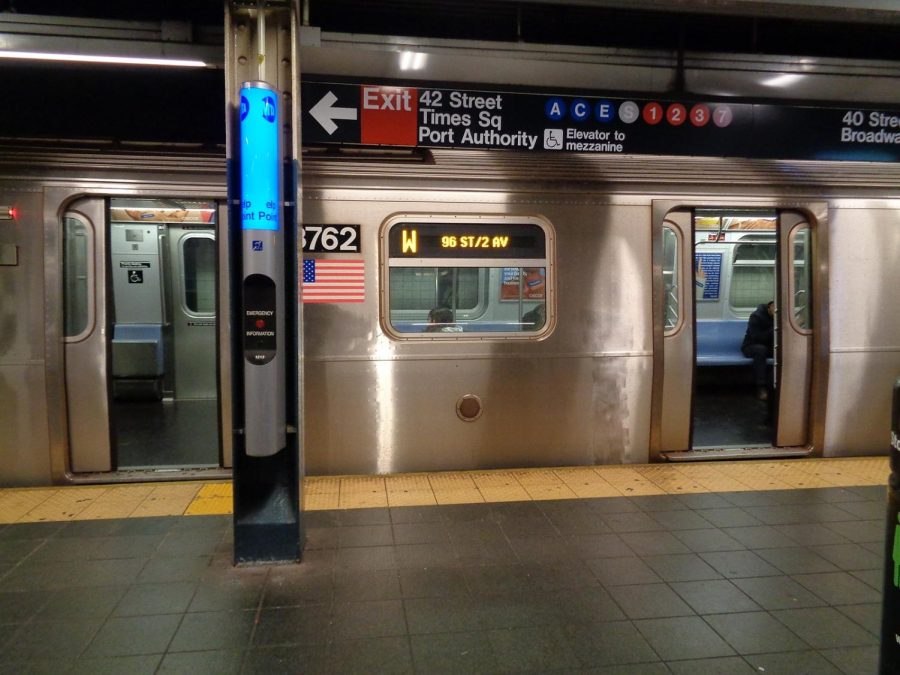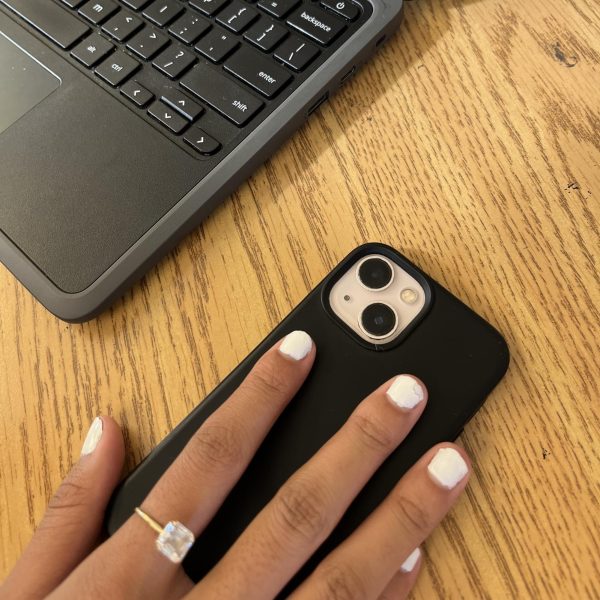What does the crime increase in New York City mean for its students?
One 25-year old man is struck over the head with a glass bottle on the ‘A’ train, while another 36-year old is being slashed in the hand on a northbound ‘E.’ A 42-year old woman is murdered after being shoved in front of an ‘R’ train as a 43-year old woman is unprovocatively smeared with human feces while waiting for her Bronx train.
These particular attacks are just a handful of the many subway crimes reported within the year of 2022 alone.
Utilizing the New York City transit system is generally an extremely popular and accessible mode of traveling, though evidently poses its own challenges. These consequences have become more prevalent as the new year has progressed.
The recent influx of subway crimes has influenced how aware both adults are when riding the train, and has increased the consideration in the measures they take while on it. It is necessary to combat this increase in crime in order to promote healthier traveling, living and learning environments for students.
“As someone who has lived in New York since 2016 and has taken the subway everyday, there isn’t a time where I’ve felt more unsafe taking the subway than now,” states Algebra 2/Trigonometry iSchool teacher Mr. Reeder. He says this as a “male who isn’t a small guy, so [he] can only imagine how kids must feel. There are lots of factors that go into what is making the subway unsafe–that can stem from COVID-19 and touch all the way on mental health issues and services. All of these things influence the safety of adults, but particularly students, when traveling to and from school.”
As students and adults returned to school and work full-time amidst the COVID-19 pandemic, crime rates in the city’s subways have notably increased. According to an NBC New York news article, “felony assaults in the New York City subway rose 28% in 2021 compared to 2020,” and this number is continuously on the rise into 2022.
A City Journal article determined that 2022 has posed its own set of crime increases, too. The “overall crime in NYC [has] increased by 38.5%” in the month of January 2022 alone, and “at least 5 NYPD precincts have reported more than a 100% increase in crime throughout all of 2022.”
A large portion of this crime is reportedly committed in New York City train and transit systems.
New York City mayor Eric Adams has strived to address and combat crime in the city’s transit systems, as he is a former transit cop himself. In his recent attendance to a mayoral Mental Health and Subway Announcement conference, Adams states that subways “tend to be a place where individuals who are not in healthy mental states seek refuge, and the increase in mental health disorders over the past five years has led to an increase in the crime in subways, as well.”
The crime increase’s importance was recognized after the peak of COVID-19, and New York is still witnessing its consequences first-hand.
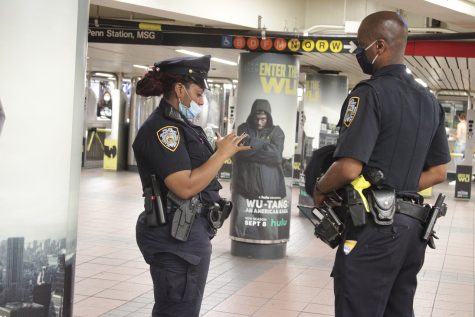
These consequences are at the forefront of students traveling to and from school over a variety of different subway lines. Many iSchoolers have witnessed interactions with mentally ill individuals on their respective trains, both personally and amongst other train riders.
A Brooklyn native NYC iSchool sophomore Andrew Rodriguez recounts one of his personal experiences while traveling on the B train: “When I entered the train, I saw open seats and so I thought it would be fine to sit there–that is until I realized why the seats were empty. There was a lady who seemed to be mentally unsound who was talking to herself and moving around [the train car].” Andrew recounts that the woman “was trying to talk to people, but they all pretended like they weren’t paying attention. People were really uncomfortable, and at one point, she was getting close to [him], so [he] had to scoot [over] a little bit.”
The uncomfortable nature that trains pose is not solely limited to the ’ train–this discomfort is also prevalent on many of the more common subway lines iSchoolers use to travel, including the A, C, E and F trains.
iSchool sophomore and Queens resident Kadiza Aktar recounts her experiences traveling along the A train at numerous times during the day: “I always see at least one person that doesn’t look like they’re O.K. on the train–they can be laying down on the seats, making a lot of noise or screaming,” notes Aktar. She admits that “it’s scary because if [she’s] going home at 8 p.m. after hanging out with friends, [she] feel[s] like [she’s] opening [herself] up to more danger.”
As proclaimed by Kadiza, there are specific times during the day where the threat while riding along the subway is greater. While many New York City residents have reportedly felt the most unsafe on the subway at night, robberies and assaults are just as expected in the A.M.
A number of slashings and beatings reported on the MTA trains have occurred in the early morning cera 6 a.m., according to an NBC news article.
Thankfully for iSchool attendees, their 9 A.M. late start time means they do not have to travel on the trains in the morning at times during which crime is spoken upon and expected the greatest.
Regardless of traveling time, though, it is still necessary for both iSchool students and staff to take necessary precaution when traveling on the subway to and from the school, as well as to and from any external locations.
Mr. Reeder first-handedly believes that the “number one thing on the subway is just being aware.” The mathematics teacher states that he “stand[s] more than [he] sit[s], because [he] feel[s] more aware when [he] [is] standing. Even when [he] [is] sitting,” he continues, “I’m holding my belongings. I’m observing my surroundings. I’m definitely not just on my phone staring.”
Andrew Rodriguez also “just [tries] to stay aware of everything around [him]. [He] used to listen to music but [he] doesn’t anymore. [He] wanted to stay vigilant and off [his] phone,” and not listening to music is his first step in doing this.
These two examples are a few of the many ways that New Yorkers all across the city are recommended by the MTA to maintain their awareness. This maintenance can prevail itself in a number of ways.
According to an MTA Safety and Security article, it is recommended that riders of the MTA should “wait for trains in designated areas during non-rush hours, avoid empty subway cars, ride in the conductor’s car (which falls in the middle of the train) during off-hours on the subway, and use subway entrances and exits where there is the most activity.”
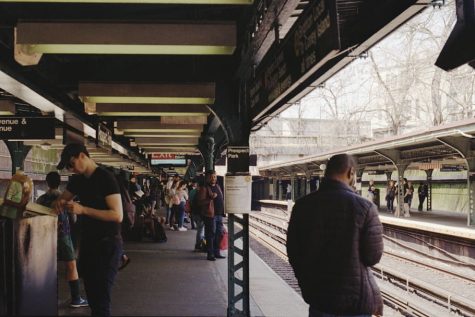
These rules are often adapted and utilized to different extents for specific groups of people in New York City, those of which include women.
Kadiza believes anyone on the subway has the potential to be a target of an attack, but she argues that “now, there is increased violence against women, so [she] [does] think [women] are potentially at higher risk compared to other groups of people.”
This targeted violence is not only limited to the MTA nor New York alone.
According to a Pop Center statistics article, researchers estimate that “approximately 20% of women in the United States have been sexually assaulted, with strangers attacking approximately one-quarter of them.”
Women can be more susceptible to these various forms of violence in public due to a number of reasons.
Kadiza thinks “this [violence] can be because of stereotypes, where women are seen as frail or easy to manipulate.” She continues: “I think women can also be at higher risk due to the fact that there are these connotations that we wouldn’t be able to fight back.”
NYC iSchool history teacher Ms. Strassler adds that “more people that deal with mental health issues on the subways and streets are men because it is often unsafe for women to be homeless or on the street. Men may not feel as threatened being alone,” and so “women tend to be targeted at greater rates as a result.”
In order to combat the increased assault and crime cases in the subways, both women and all transit users alike have the option to carry self-defense weapons and various preventative measures.
While some individuals similar to Mr. Reeder “don’t necessarily feel like the risk is to a level where [he] [has] to carry any type of defensive weapon or any type of spray” because he simply “feel[s] uncomfortable having something like that,” a handful of iSchool students prefer to have something alongside them when traveling through the transit system.
A source from the iSchool that has asked to remain anonymous states that she “only feels safe on the train when she has pepper spray with [her].” She believes that “New York hasn’t been hearing of many crimes on buses because buses are more publicized and aren’t as isolated places compared to the subway. That isolation scares [her], and as a small girl [she] [doesn’t] feel safe free-handed when [she] [is] riding the train.”
She continues to mention that “some of [her] friends at iSchool carry pepper spray and things of those sorts too, because of the subway stations they use when coming to school. It’s all about circumstance,” she summarizes, and “how safe people feel will always be relative.”
This notion can also apply outside of the iSchool community as well.
In fact, across all of New York City, another high school has “confiscated 21 items in a single day, including nine pepper spray canisters, seven knives, four Tasers and a pair of brass knuckles.” These weapons appear to be common in a number of high schools across the city.
Students carry these weapons to “be safe in a city that has been made unsafe,” but school’s prohibition of these defense mechanisms impact how safe students feel when traveling to and from their educational institutions.
With roughly 88 of the 520 New York City public schools utilizing metal detectors on a daily basis, any metal and simultaneously dangerous item is not allowed to pass through and into the school building.
Considering the safety of students inside schools, Ms. Strassler continues, “I’m not sure how other students and staff would react to students carrying such fallible items on their person. That can create a level of discomfort in school buildings that you don’t necessarily want.”
Mr. Reeder is one of the many teachers who reject the normalization of weaponry in schools: “I don’t trust every single student nor adult to be safe with [weapons in school]. I don’t believe it is the answer to the influx in crime we’re seeing.” Reeder urges that schools should be considering “what will cause the most problems overtime,” and “[he] personally [feels] that having students equipped with defensive weapons in a school setting is not going to play out well.”
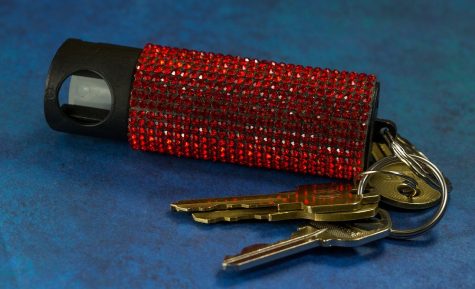
It is also important to consider the level of comfort teachers may feel as the carrying of weapons increases.
As a teacher, Mr. Reeder adds, and “as someone who has to sit in the room with those weapons, [he] [doesn’t] think that’s the right move.”
It is often also difficult to decipher individual reasons for carrying weapons. While some students want to equip themselves while riding the trains, this inclination may not be identical for every single student.
An iSchool senior who travels along the 1 and 2 lines to and from the Bronx daily, Raphielid Portorreal Flores, adds that “you never know what the motive of the student is. You never know if it’s just for the train, or if they actually want to hurt somebody on school grounds.”
Simultaneously, she argues, “[students] come to school using the trains and then have to go back home using the trains. Prohibiting weapons in school does not change the fact that there is still a threat once we leave this building.”
These belongings that some students carry are also usually not returned at the end of the day if they are confiscated while passing through metal detectors.
Kadiza Aktar continues: “I think that, by the schools taking things away and not giving them back at the end of the day, the students may find that they are open to more harmful things because they don’t have the things they defend themselves with. By trying to improve safety in schools, [authorities] may be decreasing how safe students feel outside of school.”
Both circumstances are proven to be important and thus should be considered when schools and higher authority come to a unanimous decision that “keep[s] [students] safe from those substances while also making sure kids feel safe getting to their destinations.”
From the unification of school safety agents and local NYPD precincts to stationing police officers in train stations in close proximity to schools, there are many approaches that can be taken when dealing with the spikes in crime rates.
Though due to the fact that schools do not have direct influence on what occurs on the subway and in the platform, it is up to the city to address the root of the issue through a conceptual approach.
“It shouldn’t be the police’s job to be inside educational institutions to make sure they feel safe,” says Andrew. “They should do a good job at making sure people stay safe out on the street and in the subways to begin with.”
If the issue is individuals who are mentally unstable and are in need of support, Mr. Reeder says, “the systems in place that are supposed to be helping people but aren’t are the systems that need to be re-examined. Doing anything else is just putting a bandaid on a broken arm.”
These support systems included but are not limited to mental health resources, shelter and specifically adequate education.
As stated in an Exploring your Mind psychology newsletter, “education is always present [around us]. From the moment we are born until the day that we die, we are constantly acquiring knowledge and values.” A proper education is known to act as the “foundation” to critical thinking and the consideration of different ethics.
Thus, if adequate education is available to all young people before and as they grow older, Andrew Rodriguez believes that “[the city] can help to stop crime. It’s hard to stop crime once it’s already begun, and so [he] think[s] [the city] should start at a young age, and make sure kids are on the right path.”
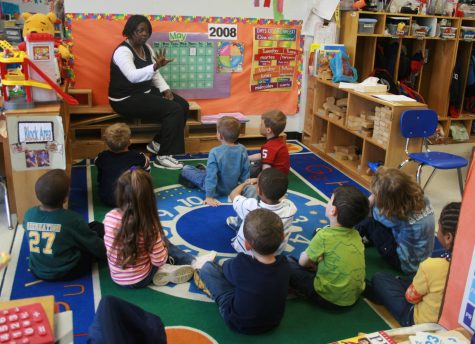
With this, New York City and cities across America alike have the ability to indirectly reduce the amount of crime they see through an educational and “long-term, sustained reduction.” Though its benefits may take years to see and identify.
Nonetheless, adequate education alongside sufficient mental health services on the subway have the potential to make New York a safer city overall. One of the factors to consider is who responds to mental health-related issues or crises.
Ms. Strassler says that “someone acting out in the subway may be going through a mental health crisis, so working more with the City Health and Human Services Department could help to figure out how the city is going to handle the unhoused and mentally ill population.”
The effects that this change in policy will provide will ripple through the safety of all New Yorkers, regardless of where in the city they may be.
Mr. Reeder concludes: “The situation gets slippery really quick, because we have to think about the ways in which we’re policing the subway. At the heart of it, it becomes this issue that is so complicated and there’s always a sense of hopelessness because we don’t know what’s going to happen.” Nonetheless, he reassures, “there are amazing things about New York City–it’s one of the greatest cities in the world, particularly because of the people. It is so important that we, as a city, preserve and cater to the needs of the people of this city so its legacy lives on.”


